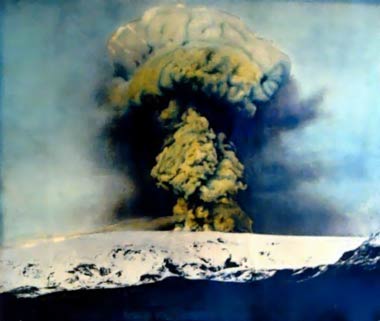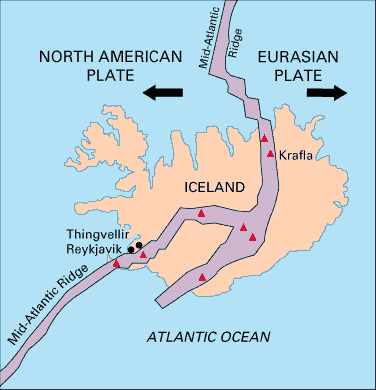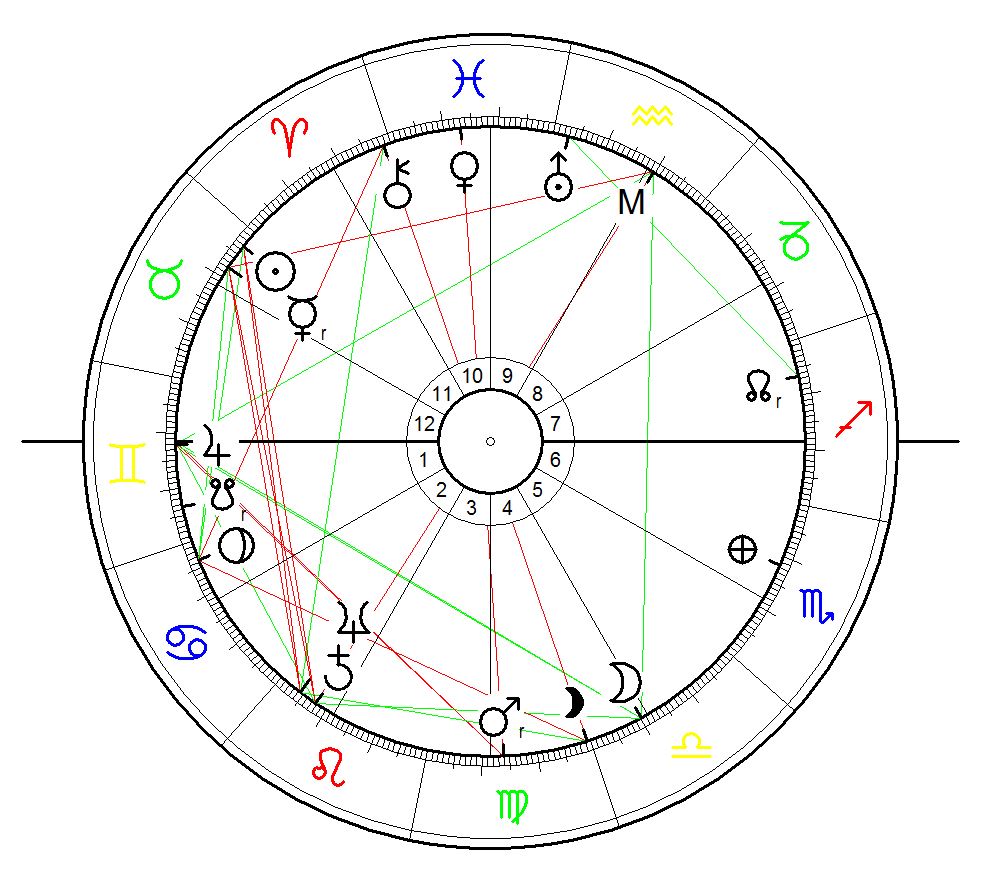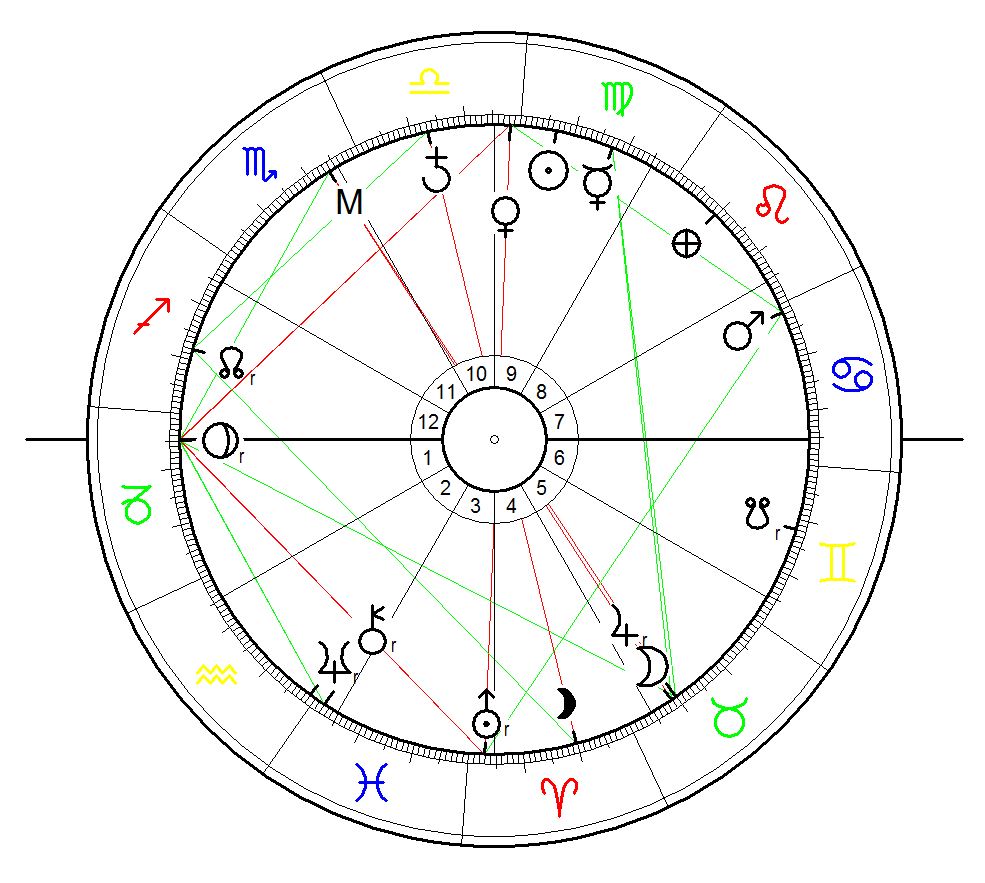Astrology and Places: Katla Volcano in Astrogeography
Compare: The Eruption of Cotopaxi Volcano in astrogeography, The Eruption of Mount Pinatubo in 1991, Hawaiʻi Volcanoes National Park in Astrogeography,Krakatoa and the extreme weather events of 536 AD, Connecting Earth and Sky through a Pyramid, The Nepal Earthquake on 25 April 2015, The San Francisco Earthquakes in astrogeography, Haiti earthquake, Fukushima, Supertyphoon Yolanda, San Onofre, Crimea Earthquake

Katla is the second largest and one of the most active volcanoes in Iceland. Twenty eruptions have been documented between 930 and 1918, at intervals of 13–95 years. It has not erupted violently for 97 years, although there may have been small eruptions that did not break the ice cover, including ones in 1955, 1999, and 2011. Katla´s peak reaches 1,512 metres (4,961 ft) and is partially covered by the Mýrdalsjökull glacier.
For interpretations and speculations about future erruptions and dangers from Katla volcano field level 1 should be observed to understand long – term processes like the shifts of the tectonic plates and their effects.

Astrogeographic position for field level 1 which decribes the international, supraregional meaning of the position of Katla volcano: Katla volcano is located at 12° of air sign Gemini and 3° of earth sign Capricorn.
The 1918 eruption of Katla volcano
The last visible eruption of Katla volcano occurred in 1918. I couldn`t find the exact date and time but for observation purposes suggest looking at the astrological chart of April 24 1918 the day when Jupiter passed 12° Gemini one of the two systemical astrogeographic coordinates of Katla Volcano for field level 1. The ascendant is calculated for the moment when Jupiter was rising. As Pluto was in exact opposition, and Chiron as well as Mars in exact squares to the astrogeographic positions of Katla this day was a climax of tension for the astrogeographic position of Katla and could have been a crucial moment for the development of tension inside the magma chambers below Katla volcano.

The phase of Pluto`s transit in exact opposition to the 2° Capricorn position of Katla Volcano had begun on 9 July 1913 with Pluto`s ingress in Cancer. Pluto`s transits can of course be related to pressure resulting from movement of solid rock materia as well as magma. This means that the eruption might have been an effect of mounting pressure since the beginning of Pluto`s transit since 1913. Eruptions of volcanoes are the climaxes of long processes during which the pressure on magma chambers increases. In regard to the transit of Pluto the moment of eruption in 1918 came in the final phase of the transit and not in the beginning. The slowest moving planet sort of paved the way. But the eruption came in the year when in addition to pluto`s transit faster moving Chiron entered into a square to Pluto and the astrogeographic position of Katla in Capricorn and another even faster planet which was Jupiter transited the second of the 2 coordinates of Katla in Gemini.
The period of Pluto´s transit of the exact opposition to Katla volcano lasted until the end of a retrograde phase on 19 March 1919 at 4° Cancer. Pluto is together with Uranus, Saturn, Jupiter and Chiron one of the most important astrological indicators for processes that lead to eruptions of volcanoes and earth quakes. Neptune cannot be excluded as an important factor but his indications may rather be seen in the release of tension through destabilization of magma chambers and movements of water in the ground.
Chiron`s ingress in fire sign Aries and into an intense aspect of tension in the form of a square position to Katla`s astrogeographic coordinate at 2° Capricorn on 31 March 1918 is another aspect of tension which has to be considered as a possible indication for the processes below Katla volcano that lead to the eruption.
The possible 2011 eruption
Because the crater of Katla volcano is hidden below a several hundred meters ice shield smaller eruptions may not be visible.

This chart is not calculated for the date of an eruption of Katla but for the day when Pluto went direct after a retrograde motion on 16 September 2011 ending the phase of his transit over the coordinate of Katla which had begun on 25 January 2008. This
The astrological transits of the relevant outer planets in aspects of tension were highly intense during the year 2011 with Uranus ingress into Aries on 29 March 2011 as the most important, The Uranus ingress into Aries brought Uranus in exact square not only to the astrogeographic coordinate at 2° Capricorn but also to Pluto.
Future transits:
Saturn`s ingress into Capricorn and over the 2° Capricorn position of Katla volcano should be observed as the next potentially problematic transit for the situation at the volcano. That transits will become effective around the time of the winter solstice on 20 December 2017.
Neptune is currently entering into a square to the position of Katla volcano during his transit of 12° Pisces in exact square to Katla`s position at 12° Gemini between March 2016 (10° Pisces) and January 2019 (14° Pisces). Neptune`s transits do not indicate increase of pressure inside the magma chambers in the first place but could of course have such effects for example through destabilization of the walls of magma chambers.
The Saturn and Neptune conjunction in as square to Katla in 2026
The next intensely critical transits in relation to Katla will be the conjunction of Saturn and Neptune both ingressing into Aries and entering into a square position to Katla from January 2026. In the course of this transit destabilization of the situation around and below Katla is to be expected. Saturn´s next transits over the opposition to Katla at 12° Sagittarius in January and October 2016 could be used to observe and explore the effects of Saturn`s transits and find out more about the effects that Saturn may possibly have in the course of the intensely important transits that will begin with Neptune´s first ingress in Aries on 30 March 2025.

Although the conjunction of Saturn and Neptune will occur Iater I recommend taking a look at the astrological chart for Neptune´s initial ingress into Aries first for examination of the process around Katla volcano. The above chart is calculated for 30 March 2025, at 11:54 for Hvolsvöllur, Iceland with Placidus houses.

The Saturn – Neptune conjunction will take place at 0°45`10″ in dynamic fire sign Aries. The effects of Neptune relate to a destabilization of magma chambers rather than to a rise of pressure on the inside. On the other hand Saturn`s movement as the planet of the hardest, most solid types of rock in a square to the volcano could indicate a rise of pressure. But of course Saturn`s transits as a comparativly fast moving planet are not as profound and long-lasting as to be valid explanations for the reason of an eruption. The outer planets play the major role in regard to the larger scale of movements around and below volcanoes. This role rather lies with Pluto in the first place. Pluto`s position in a sextile to Katla does not particularly indicate rising pressure at Katla through movements of the north american or eurasian plates.